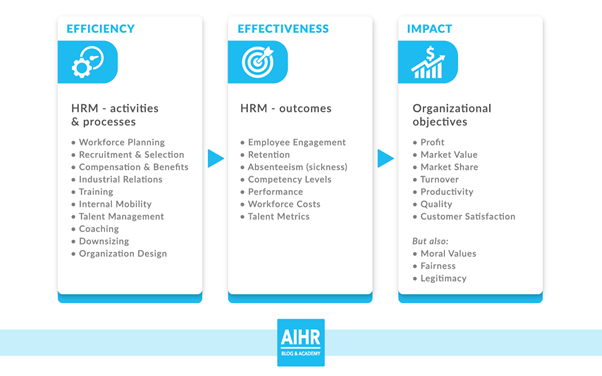In every organisation, the Human Resource department has always been up against it. They have a significant role in recruiting the best talent in the market, retaining them, developing them, motivating them and generally driving business performance across the board. It’s no small order. But it’s fair to say that HR teams don’t always get the praise they deserve. They’re often an unpopular department, and this is for two reasons.
Firstly, they’re the bearer of bad news. If you’re up for a disciplinary: HR. A tricky performance review: HR. Unsuccessful in a job interview: HR. You need to be let go: you get it. HR do the jobs other departments can’t. They provide a framework and a methodology that keeps businesses safe and employee practices fair, but the job is a hard one.
Secondly, HR teams don’t have a reputation for measuring success. They’re not number crunchers or sales orientated. They’re sometimes regarded as soft. Fluffy. Taking a human approach over a mechanic, results-based one.
But these old-fashioned perceptions are changing. HR departments the world over are going through a radical change: and one thing sits at the centre of it all: data.

HR analytics
HR analytics is about using data to solve an organisation’s people problems. It’s about taking standard HR processes like talent management, benefits and training and assigning value to it all; using relevant, accurate metrics to track the effectiveness and impact of everything the department does.
By looking at data in a holistic way, HR teams get a better idea of how the business is operating, and can then make more informed, strategic decisions. As an example, let’s take some common metrics. A typical HR team can tell you the annual employee turnover rate of each department. Or the total spent on reward. Or how many training programs a team has run. But bring in data from beyond HRM systems, from finance teams, or sales departments, and the HR function tells a fuller story. It can tell the business how effective HR activities are, and how in turn this affects business performance.
Analytics in HR (https://www.analyticsinhr.com) summarise this value chain well. By going beyond descriptive metrics to looking at impacts of activities, HR move from a cost centre to a value-adding function.

Answering the exciting questions
This is what we do as a data lab. We look beyond the dull, vanity metrics and dig into the money makers; the metrics that show how and why a HR department is worth the budget.
By looking at data across the business — we can show insight in many areas. And in ways that take HR from soft to serious:
Recruitment
- Which department takes the longest time to fill roles?
- Which roles have the highest recruitment costs and dropout rates?
Performance
- Does reward affect performance levels?
- How does performance vary by department?
Engagement
- How does employee satisfaction relate to performance?
- How does benefit participation affect performance?
Diversity
- Is there a gender pay and bonus gap? Does this differ by role level or department?
- Do you have a disproportionate number of employees of a certain age or gender? Does this differ by role level or department?
Reward
- Are employee benefit schemes retaining the highest performing employees?
- Is there a correlation between employee satisfaction and employee benefits?
Learning and development
- Which department spends the most on L&D?
- How do promotional trends vary across your business?
Retention
- Do some departments retain employees better than others?
- Is the business retaining the highest performing employees?
Travel & Expenses
- Which department/team spends the most on travel?
- How have travel & expenses costs changed over time?
To find out more about what we do, take a look at our website and get in touch.